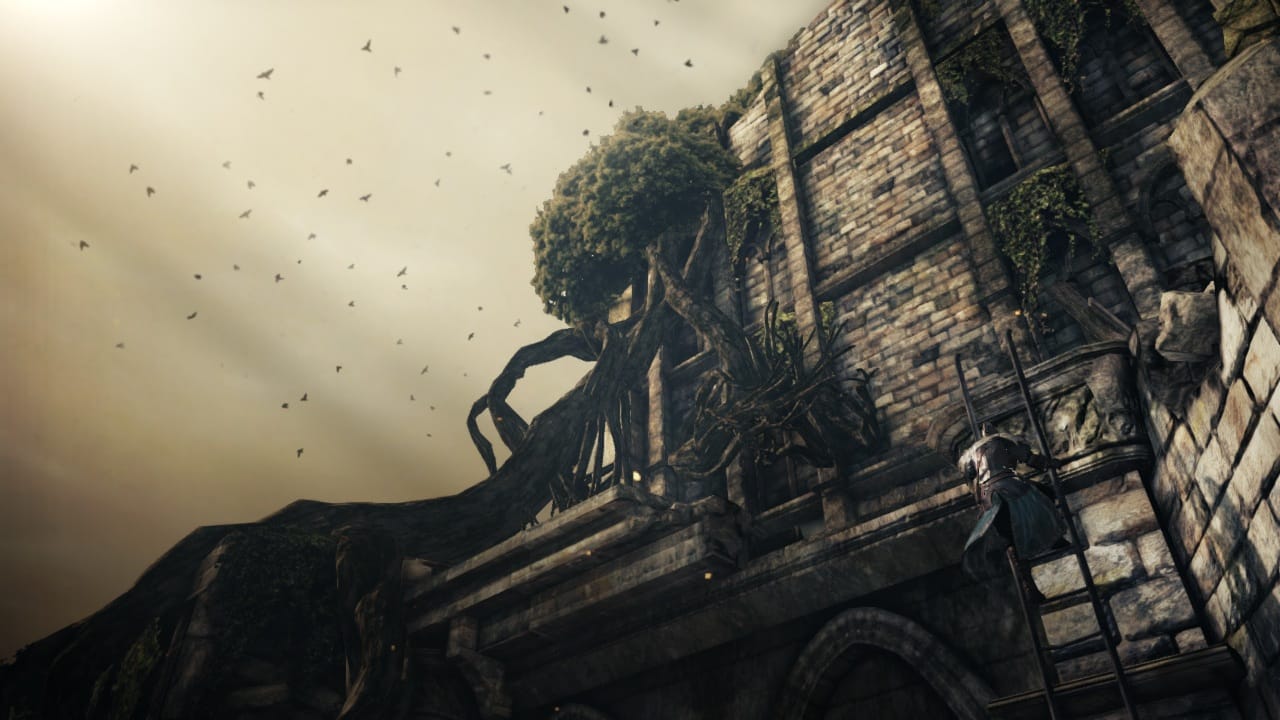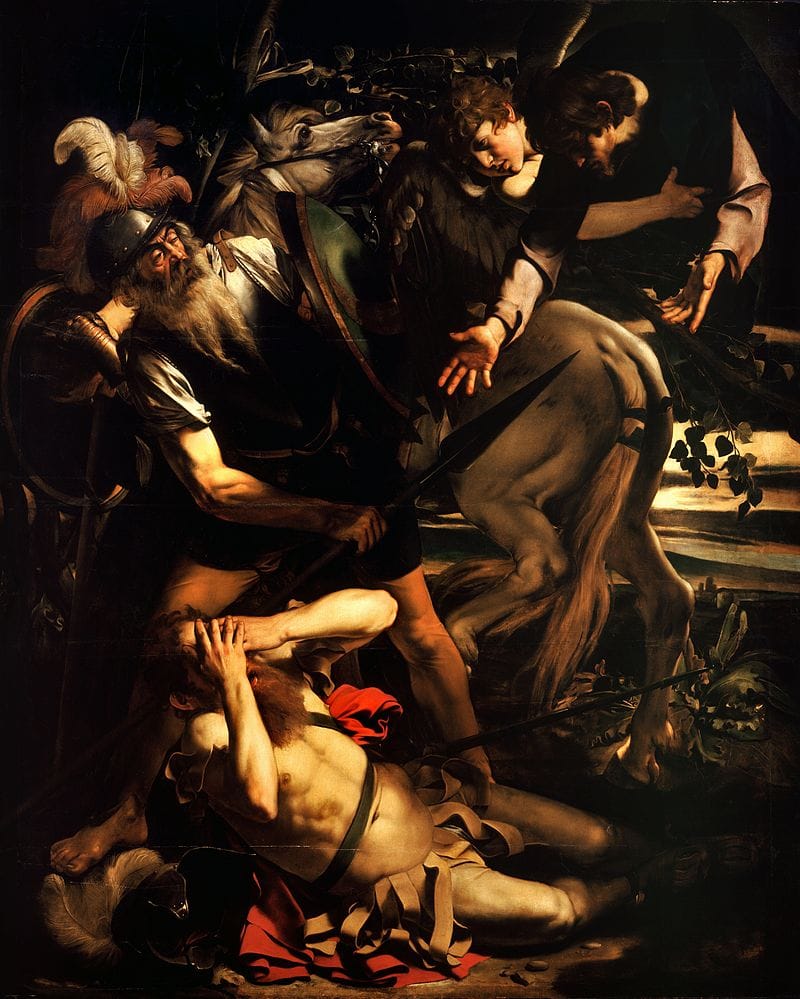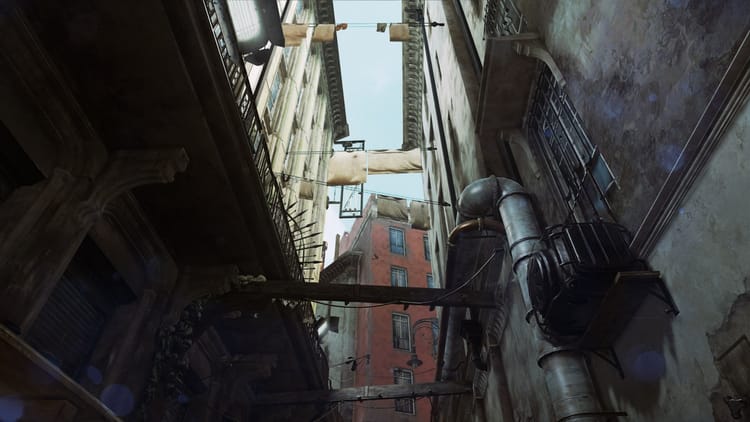Videogames and the digital baroque

During the 17th century in Europe and her colonies, mankind was forcibly removed from the center of the universe and cast adrift in an indifferent cosmos devoid of greater purpose or meaning. This was accomplished not by any supernatural power but by advancements in technology, particularly optics: telescopes could chart the motions of previously obscure celestial bodies while microscopes could, for the first time, see the living cells that made up human bodies. Earth turned out not to be the center of the universe but one of many planets that orbited the Sun; an average star among countless others in the heavens. The human body was not a complete and sacred image of God, but a fragmented mess of cells, each growing, splitting, and dying autonomously. Literary critic William Egginton, in his book The Theater of Truth (2009), wrote that “the relation of appearances to the world they ostensibly represent” was a central problem of baroque thought, a problem that had no easy solutions and, thus, was pondered by generations of artists and writers through the works they produced.
The arts—painting, sculpture, architecture, theater, and poetry—flourished not in spite of these problems and upheavals but perhaps because of it. The baroque era, which lasted roughly from the late 16th century to the middle of the 18th, played host to new varieties of artistic expression that, in their melancholic mourning, pilfered fragments from ruined or imagined pasts and rearranged them—like a puzzle without a solution—into a nearly endless variety of novel forms and iterations. This process continues to this day, as a growing number of theorists draw parallels between the disorienting effects of digital technology in the 20th and 21st centuries and the societal upheavals of the 17th. A digital baroque era has been inaugurated, expressing potential solutions to the same problems of thought through the media we produce and consume.
The human body was not a complete and sacred image of God but a fragmented mess of cells
The relationship between image and reality has been brought into question once again due to the destabilizing effects of digital technology. Richard Sherwin wrote about this tenuous relationship in his book, Visualizing Law in the Age of the Digital Baroque (2011): “In a time when we can digitally picture just about anything we can imagine it should not prove surprising that doubts may arise concerning the truth of what we see. This feeling of doubt, which culminates in a loss of confidence in the faculty of representation itself, lies at the core of baroque culture—both the baroque culture of 17th century Europe, and the global digital baroque culture that we are living in today.” The baroque presents the threatening notion that, if there is an absolute reality beyond the veils of appearances, we have no means with which to access it. The mediation of digital technology—a gatekeeper stationed between an assumed reality and the images we see of it—has brought this anxiety to the fore once again, now fittingly expressed through digital media. Final Fantasy VI, a role-playing game released for Japan’s Super Famicom in 1994 and localized as Final Fantasy III later that year on the Super Nintendo in America, is an artifact of this anxiety, a virtuoso performance that uses visual, audio, and narrative techniques of the historical baroque while pushing the game technology of the early 1990s to its limits. From Software’s Souls series, consisting of Demon’s Souls (2009) and Dark Souls I, II, and III (2011, 2014, and 2016), popularly known for their infamous difficulty, presents a neo-baroque vision that stands as a counterpoint to that of Final Fantasy VI: the worlds presented in the Souls games lack most surface trappings of the baroque but, on the levels of narrative and interactivity, are conceptually indebted to the problems of thought that influenced artists of the baroque and digital eras alike.
In 1928, Walter Benjamin published his first (and, during his lifetime, his only) book, The Origin of German Tragic Drama, examining a little known—and even less appreciated—genre of German theater: the baroque Trauerspiel, or tragedy play. Towards the end of the text Benjamin, writing about the use of allegory in the genre, sets up an allegory of his own: “In the ruin history has physically merged into the setting. And in this guise history does not assume the form of the process of eternal life so much as that of irresistible decay. […] Allegories are, in the realm of thoughts, what ruins are in the realm of things. This explains the baroque cult of the ruin.” To Benjamin, the artists and writers of the baroque rarely, if ever, invented anything: they instead took pieces from antiquity and stuck them together to form new combinations of existing elements. The ruin and its fragments constituted “the finest material in baroque creation,” and the era’s artists and writers collected these fragments with the hope that new works would coalesce from these piles of cultural detritus. Benjamin’s ruins are not the literal remains of ancient civilizations, but textual, visual, and narrative fragments scattered throughout the field of history. The “baroque cult of the ruin” is related to the baroque problem of thought—the gap between image and reality—through the assembly of new fictional realities from these leftover bits of past images. This is heightened in the digital age, as processes of digitalization involve multiple levels of fragmentation down to the individual zeroes and ones of binary code. The worlds presented in Final Fantasy VI and Dark Souls could be seen as fractured from the start, existing as ruins of bits and bytes burned to ROM chips or pressed on DVDs. At another level, both games use the ruin as a form of narrative structure, allowing the player to put together a broken story piece by piece, fragment on top of fragment.

Final Fantasy VI is a game divided in two: the first half builds up a world and story characteristic of a mid-90s role-playing game, with the player assembling a ragtag band of rebels to fight against an evil empire. In the second half of Final Fantasy VI the ruin becomes the main form of both the in-game world and the narrative. The player’s party of characters has been broken up and strewn around the world. The world map itself has been violently rearranged, with continents shattered to bits and smashed together to form new land masses. At the same time as the world is broken apart, the game’s narrative is fragmented as well. The previous half of the game had a chiefly linear storyline progression: one event followed another, and the game’s events kept the player on a narrow, singular path. This narrative path, along with the world, is destroyed in an apocalypse which the player was powerless to prevent. After an escape from a deserted island, the player is given free reign over this new world, left to wander with the ultimate goal of reuniting the scattered party of characters and defeating Kefka, the self-proclaimed god of magic whose lust for power shattered the world in the first place. Interestingly, this goal does not involve restoring the world to a singular, cohesive whole. The characters seem to recognize the impossibility of returning the ruin to its former state of completion. Their goal, instead, is a practical one: prevent further destruction by killing the false god and “demystifying” the world. The characters have to be content to inhabit, rather than save, their broken world.
From Software’s Souls series takes an opposite approach from that of Final Fantasy VI: rather than ruining the world and the narrative before the player’s eyes, the game takes this fallen state as its genesis and allows the player to build the world and story as if wandering through a vast field of scattered fragments. Dark Souls begins by throwing the player into a world of dying flames, offering minimal explanation or exposition beyond the basic controls, written in glowing orange “messages” on the ground. These messages, whether left by the game’s developers or by other players, are a few of the many fragments the game invites the player to piece together. Every item the player can pick up has a bit of narrative associated with it. Some of this “flavor text” is straightforward, telling the player how to use the item, but much of it offers insights into the game’s story that cannot be found anywhere else: all of these fragments add to a larger story that, to the delight of some and the frustration of others, may not actually exist.
artists of the baroque took pieces from antiquity and stuck them together to form new combinations
A technique that was widespread in historical baroque artworks was anamorphosis, the intentional distortion of a pictorial element that calls for the viewer’s direct involvement to “complete” the image. A canonical example would be The Ambassadors (1533), a pre-baroque painting by Hans Holbein the Younger that featured a strange gray smear in the foreground between the painting’s two figures. If the viewer stands at a particular angle, however, the smear resolves itself into the shape of a skull, a reminder of the omnipresence of death amidst worldly wealth and power. Anamorphic technique is not limited to simple distortion, however: an anamorphic technique that Gregg Lambert, in On the (new) Baroque (2008), calls the “central absence” involves the subtraction or non-inclusion of an element central to a work’s composition. Lambert cites Caravaggio’s painting The Conversion of Saint Paul (1600) as a prime example, as it depicts the titular saint’s conversion on the road to Damascus yet does so in a completely naturalistic manner, leaving images of angels or apparitions out of the picture in favor of the swirling shadows of baroque chiaroscuro. The focus of the painting—Paul’s spiritual change—is shown in a more powerful manner by not being shown directly.
Both Final Fantasy VI and Dark Souls have central elements that are inaccessible or non-existent. In Dark Souls, the storyline is made visible to the player almost exclusively through the narrative fragments provided by items, characters, or other players. The game’s story does not exist in any singular form outside of the player’s interaction. The player is encouraged to create a story out of these fragments, but that story becomes about that particular player and her interaction with her world, rather than a “grand narrative” of the game’s world in general. An earlier work that used a similar method of narrative and world building was SquareSoft’s SaGa Frontier (1997), a role-playing game that, rather than featuring a single story, allowed the player to play through seven loosely interconnected storylines in any desired order. Each of the game’s seven main characters had a storyline that revolved around him/her/it: the cast included a magician training to fulfil his destiny by killing his twin brother, a girl whose life had been saved by a blood transfusion from a vampire-like “mystic” lord, and an ancient robot who sets out to rediscover and complete a lost mission. Each of these storylines could stand on its own, but all of them are tenuously connected to each other, having worlds, areas, characters, enemies, and some sub-plot elements in common. They don’t present different sides of a larger story, as there is no larger story to represent. SaGa Frontier could be seen as a “polycentric narrative,” as it contains multiple stories yet has no single element acting as its “center.” At the narrative center of SaGa Frontier is a void, like that of Dark Souls, an empty space for the player to fill using the raw material given to her by the game.

The Conversion of Saint Paul (or Conversion of Saul), Caravaggio, 1600
In Final Fantasy VI, the player could be seen as the absent central element, as there is no way to directly control the characters on screen: the player is a director, issuing commands to them from outside of the game’s diegetic space. While player interaction in Dark Souls is centered around the player’s avatar, and thus the player’s presence in the game’s world by proxy, Final Fantasy VI has no means through which the player can interface with the world directly. In a battle situation in Dark Souls, the player’s button presses have a predictable and particular correspondence to the avatar’s on-screen and in-world actions: pressing the “attack” button allows the avatar to strike with an equipped weapon, while the “dodge” button immediately executes a dodging somersault. In Final Fantasy VI, by contrast, the player’s interaction with the game’s cast of characters is mediated by systems of menus. To attack an enemy in battle, the player selects the “Fight” command. The character on-screen switches to a battle stance, waits for her turn in combat, and, depending on calculations made by the game’s battle system, may or may not execute the attack as commanded. If the character gets hit by an enemy’s attack before her turn comes up, she could be knocked out, confused, paralyzed, or otherwise made to attack ineffectively, if at all. The game’s battle system mediates between the player’s commands from outside the game and the actions taken by the characters on the screen. The use of this particular system may have been due to the limitations of 16-bit gaming technology that made Dark Souls-style real-time combat impossible, or an artifact of the accumulated tropes of role-playing games that made the use of turn-based combat a relatively unquestioned default within the genre, but nonetheless the use of this system in Final Fantasy VI and similar games had powerful effects on the player’s relation to the game world and its inhabitants. The distance maintained between the player and the characters works to prevent the player from having an avatar-like identification with a particular party member. A player may have a favorite character, but none of them are empty vessels to be filled with the player’s subjectivity as the player avatar in Dark Souls can be.
Instead of being avatars, the characters in Final Fantasy VI are just that: characters, in a theatrical sense. Like SaGa Frontier, there is no single “main” character in Final Fantasy VI: the game features an ensemble cast that has no central protagonist. The narrative may occasionally focus on a particular character—such as the opening scenes, in which Terra and her magical talents are sought by both the Empire and the rebels—but the game’s overall story doesn’t follow a single individual. The game presents a cast of characters on a digital stage, allowing the player to direct (but not control) their actions from beyond the “fourth wall.” This theatricality—the division of the world into an audience and a stage—is perhaps the most direct expression of the baroque’s problem of thought. Egginton wrote, “From the moment of its inception in the late sixteenth century, the modern European theater, that institution coterminous with the division of the world into an audience and a stage, has been driven by the same troubled relation that has prodded its historical fellow traveler, modern philosophy: the relation between truth and illusion.” If this analogy holds, and the player’s role in this role-playing game is that of a director, who is the audience of the performance on the screen?
the player is both the director of the on-screen play and as its intended audience
In the theatrical space of Final Fantasy VI, and much interactive media in general, the baroque problem of thought is made more complex because the player stands on both sides of the theatrical division of space, acting as both the director of the on-screen play and as its intended audience. Multiplayer games, such as Dark Souls, complicate this division further: each player performs not only for herself but for everyone connected to her. The multiplayer system used—with minor modifications between entries—in the Souls series envisions a multiplicity of worlds, each inhabited by a single player, through which other players from other worlds phase in and out of it as “phantoms,” illusions as opposed to the “reality” of the embodied player. Some phantoms are harmless apparitions; others are summoned by the player to engage in cooperation, while some invade the world maliciously to kill and wreak havoc. All of these worlds exist parallel to one another, a setup illustrated diegetically in Dark Souls: the game world is supported by a massive “world tree,” and if the player finds the hidden area of Ash Lake at the base of its trunk, other world trees—supporting other worlds—can be seen sprouting from an endless primordial sea. Each player is the sole inhabitant of her own world, as all interaction with other worlds and other players must be mediated through phantoms, and each of these phantoms acts as performer and audience to each other and themselves.
The question of who performs and who spectates becomes even more complicated when interactive streaming technologies are brought into the equation. Online platforms such as Twitch allow players to broadcast their play to any number of viewers worldwide, who, through a text-chat interface, provide real-time feedback that can influence the player’s actions. The digital baroque could thus be seen as breaking down the theatrical division of space that had so closely defined its historical predecessor. Emerging virtual reality technologies open up new possibilities for illusionism and spectacle that could further destabilize the already tenuous boundary between images and reality. The anxieties associated with the loss of connection to an ever-receding truth are likely to stay and deepen as the digital baroque proliferates and iterates, its fragments recombining into new cultural forms that subsume and consume that which came before to create things never before seen.
Featured image via Li Taipo



